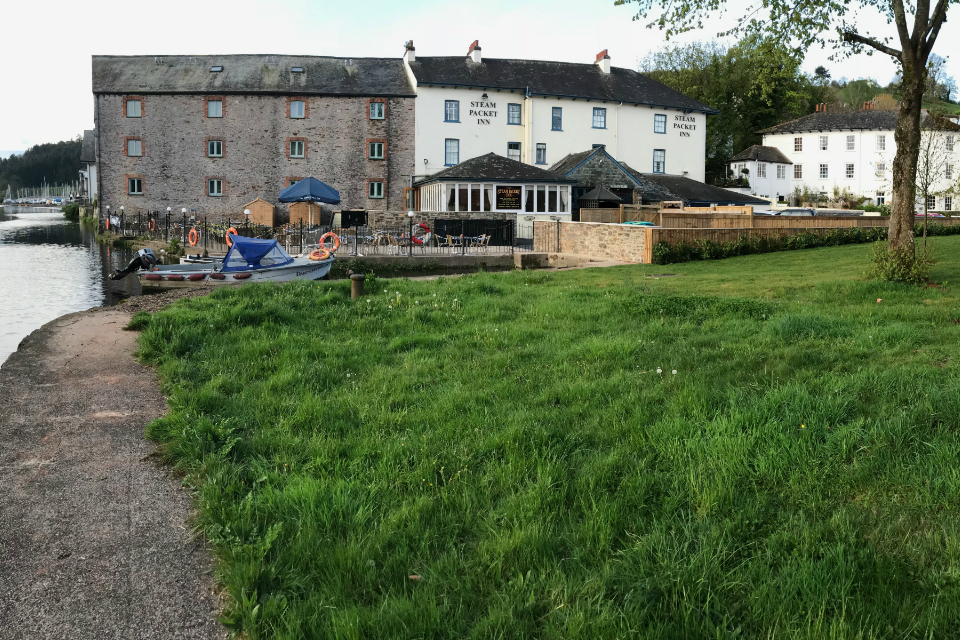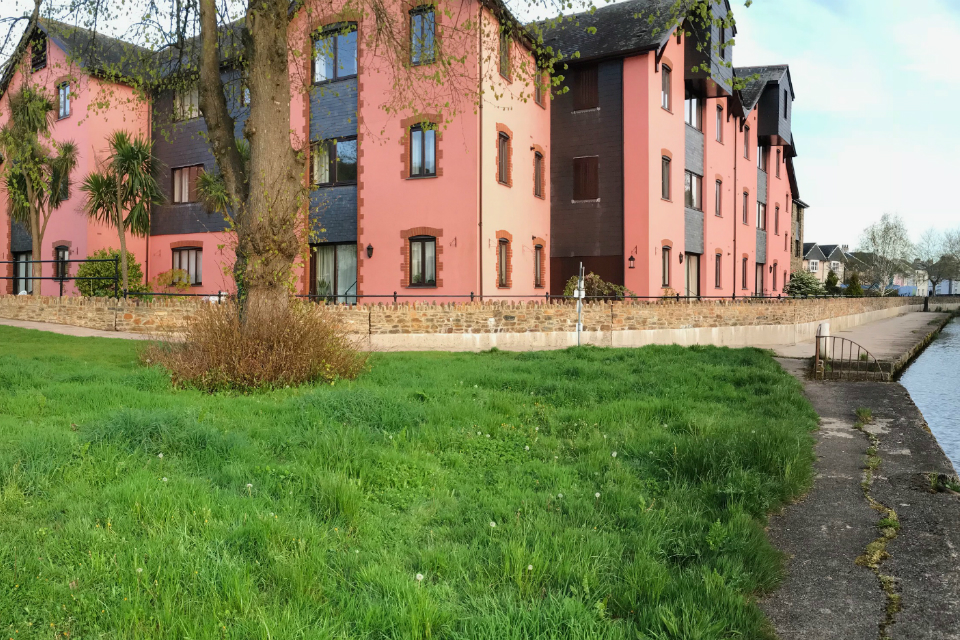Totnes: reducing the risk of flooding
Updated 18 October 2018
The growing risk of fluvial and tidal flooding from the River Dart prompted the construction of a flood defence scheme in 1980. However, an improved understanding of hydrology, which included climate and land use changes, showed there was still significant flood risk in Totnes.
In recent years the town has been close to flooding on a number of occasions and had a Standard of Protection of only between 10% and 2% Annual Exceedance Probability – or in other words some locations in Totnes had a 10% chance of flooding in any one year.
In 2017 the Environment Agency was granted planning permission by South Hams District Council for a scheme to reduce flood risk to more than 400 homes and businesses in Totnes.
The estimated cost of the works is £3.8million.
Update: October 2018
Work to reduce the risk of flooding in Totnes is nearing completion.
Broadmarsh Industrial Estate
Approximately 500 metres of linear defences constructed in the original 1980 scheme have been raised, and 140 metres of new flood wall constructed in Morrisions car park.
Totnes town centre
Totnes’ historic town centre required a mixture of flood protection measures which were sensitive to the built environment. The Environment Agency has built flood walls between properties, raised 150 metres of riverside wall in glass at ‘the Bistro’, raised a slipway and incorporated a number of buildings into the wider defence using individual property flood resilience measures such as flood resilient balconies, windows and doors. The Environment Agency adopted some of these innovations following a review of nationwide best practice from Teignmouth, Keswick and similar projects.
Steamer Quay
The Environment Agency replaced a 70-metre section of failed masonry quay wall which supported a flood defence wall with sheet piling, clad with pre-cast masonry effect panels. These panels were specially designed to incorporate habitat niches for estuary organisms and as such provide additional environmental benefit.

The new flood gates at the Steam Packet Inn

The raised flood wall in front of Throgmorton House alongside the River Dart in Totnes
Queensmarsh
As part of the wider environmental improvements the Environment Agency worked in partnership with the Dartington Estate to provide 7 hectares of restored wetland. This has created a mosaic of priority habitats, including grazing marsh, ponds, reed bed and wet woodland, benefiting wetland birds, otters, fish, amphibians and invertebrates.
Work is now substantially complete with only ‘snagging work’ and individual property level flood protection to a few properties outstanding. During high water levels in early October, the Environment Agency was able to test one of the lowest flood gates, at the Steam Packet Inn.
Tree planting and landscaping work around the town are also complete – in particular the Environment Agency is proud of the work with the ‘incredible edibles’ group at New Walk – enhancing the space for the benefit of the community.
How you can reduce your risk of flooding
The risk of flooding can never be completely removed, but you can take steps to prepare for flooding and to reduce its impact on your life, home or business. You can do this by signing up to our free 24 hour flood warning service to many areas at risk of flooding from main rivers or the sea including Totnes. Sign up online or call Floodline on 0845 988 1188.
Contact
For further information email DCISEnquiries@environment-agency.gov.uk or phone 03708 506 506.

